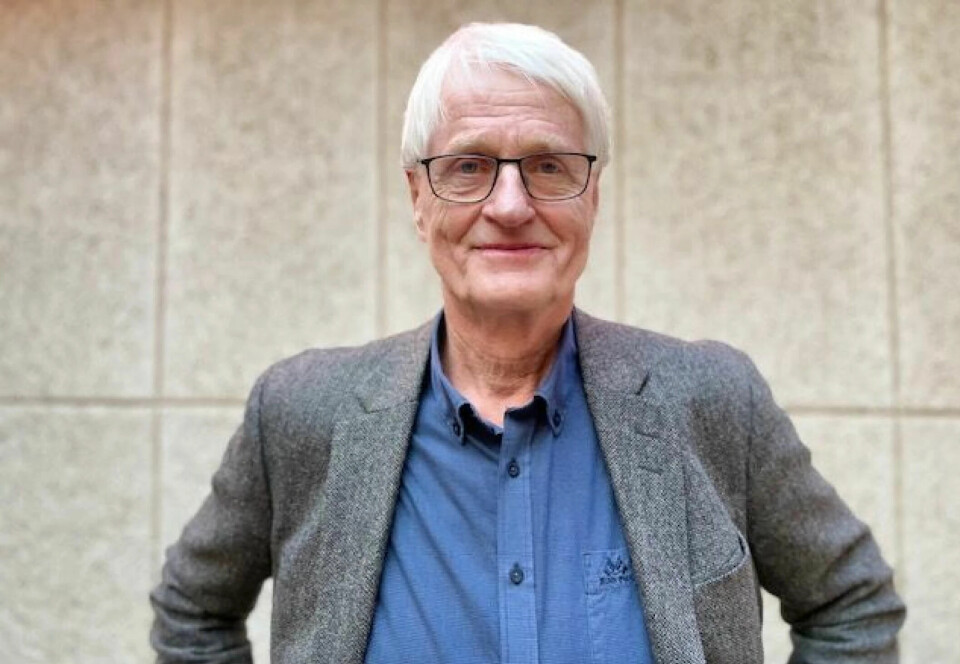
Is men’s health being overlooked?
Why do men die earlier than women, even though women have more diseases and health problems throughout their lives?
This is something researchers have pondered for some time.
The paradox was one of the topics when the Norwegian Institute of Public Health invited people to a meeting on men's health in mid-May.
The publicly appointed Women's Health Committee recently presented a report that received a lot of attention. It highlighted society's lack of investment in research and treatment of women's health problems.
But men's special health problems also need more attention, researchers say.
Sent by their wives
Bjørn Gjelsvik has worked as a general practitioner almost his entire professional life. He has met and treated thousands of grown men. In addition to his clinical work, he is a researcher. One of his research areas is the prevention of cardiovascular disease.
Gjelsvik believes that the work the healthcare system does to prevent acute heart attacks could have been much better. A lot of it is about getting more men to go to the doctor more often.
“For many men, the thought of illness is not compatible with being a strong, decisive, potent man who can handle life's challenges,” he said.
“Men are sent to the doctor by their wives. I have almost never heard a woman say that her husband asked her to go to the doctor,” he said.
Much of this is due to the male’s role in society, Gjelsvik said.
“Although a lot has changed in recent generations, most men are still reluctant to go to the doctor and perhaps find out that something is wrong with them,” he said.
Is biology the explanation?
Cardiovascular diseases, cancer, accidents and suicide. These are the dominant causes of premature death in Norway.
And in all these disease groups, men are overrepresented.
The biological differences between the sexes have often been raised as an explanation for these differences.
Now Øyvind Næss, a researcher at the Norwegian Institute of Public Health and professor at the University of Oslo, warns against taking these biological explanations too far.

Nuns and monks
Næss describes research that has compared mortality among women and men in very homogeneous groups.
Nuns and monks in Germany. Mormons in the United States.
These are environments where gender differences related to health are much smaller than in the rest of society.
These studies suggest that there doesn’t necessarily need to be such large gender differences in health and life expectancy, Næss said.
Something happened around 1950
Around 1950, something happened. Men's and women's life expectancies began to diverge. Until then, the differences had been small.
What happened at that time was that women lived longer and longer. At the same time, men's life expectancy remained stagnant and partly declined.
In 1970, the difference in life expectancy between women and men in Norway was seven years.
In recent years, men in Norway have started catching up with women again. Now the difference in life expectancy between Norwegian men and women is closer to three years. Næss sees this as further confirmation for the idea that the explanation for the difference is not about gender.
“There must be something in the surrounding environment that really matters for gender differences in life expectancy when the differences between men and women have gone up and down so much and vary so much between countries,” he said.
In Russia, the difference in average life expectancy between men and women has been 14 years at its highest.
Heart disease – a success story
Preventive efforts to reduce cardiovascular diseases in Norway have been a success story, Næss says.
These diseases have mostly affected men.
In addition, the proportion of the population that smokes every day has fallen dramatically, especially among men. From 1970 until today, 85 per cent fewer people in Norway have died of heart attacks, according to Dagens Medisin (link in Norwegian), an online Norwegian news site for health sector professionals.
Cholesterol and blood pressure levels in the population have followed the same trajectory, and have improved. And this has happened despite the fact that Norwegian BMIs have increased, and people are more overweight.
Social differences may be the cause
Although the differences in men's and women's life expectancies have decreased in recent years, men are still far more likely to develop cardiovascular diseases and other so-called non-communicable diseases such as COPD, cancer and diabetes.
Næss believes that efforts should now be focused on reducing the social differences in health.
These differences are larger among men than among women. And that may be much of the explanation for why men fare worse than women when it comes to health and life expectancy.
“People who are socially disadvantaged also have more chronic diseases. Consequently, there is still more to gain from measures such as lowering blood pressure and cholesterol,” he said.
Næss notes that measures to improve a population's overall health often primarily affect people who are already in good health.
If, on the other hand, public health officials manage to reach the entire population with new health measures, then they will also reach a large group of men who are more likely than others to be in poor health. This approach also reduces social differences in the population.
Peeing blood
Gjelsvik tells a story about a patient he calls ‘Roger’. The 67-year-old recently came to Gjelsvik and said that he had been sent by his wife to get checked.
The patient had seen the doctor three months earlier because of urination problems. Gjelsvik had then contacted ‘Roger’ again, because he had elevated test levels that showed changes in his prostate.
‘Roger’ did not appear again until after a couple of months.
This time, he came at the urging of his wife. During the conversation, the patient said that he had urinated blood. His urine was red, but the symptoms had disappeared within a day. The same thing had happened a couple of months earlier.
“This is not an atypical story. The symptoms he had, visible blood in the urine, is a cause for alarm. In the Norwegian healthcare system, this gives the patient right to jump to the front of any queue for a quick check to look for cancer,” Gjelsvik said.
When his symptoms went away on their own, ‘Roger’ just carried on, without wanting to think any more about it.
“He had forgotten the letter from me, or perhaps repressed it,” Gjelsvik said.
Hunting companion was breathing hard
‘Erik’ is another example Gjelsvik highlights. ‘Erik’ and the GP are in the same hunting team.
Gjelsvik noticed that when they walked next to each other uphill during the hunt, his otherwise strong hunting companion had to stop a lot. He was breathing hard.
After parting ways, ‘Erik’ quickly announced on the hunting radio that he had shot a deer. Shortly afterwards, his comrades called again. Now ‘Erik’ says he needs help.
When Gjelsvik heard his friend’s voice, he realized something was wrong. He found ‘Erik’ pale and with cold sweats, with clear signs of a heart attack.
Do not ignore symptoms
The story of Gjelvik’s hunting companion has a happy ending.
After this incident on the mountain, ‘Erik’ was able to tell the doctor that he had felt a bit of tightness in his chest when he went uphill recently. But it had passed when he stopped.
“The first symptoms of a heart attack are pressure in the chest when you are exerting yourself — pressure that you haven’t experienced before.”
Mature men should not ignore these symptoms. But they often do, says Gjelsvik.
Older men should get more care
Gjelsvik believes that it must be up to each individual whether they want to see a doctor.
“At the same time, it turns out that men become more vulnerable when this responsibility is left to them. Perhaps we GPs should become better at calling in men who don’t come for check-ups and follow-up?” he said
Men in older age groups are the most vulnerable. Especially older men who have a poor network of women around them.
“Elderly centres are very important for older men. Maybe we should become better at reaching them there?” Gjelsvik said.
Translated by Nancy Bazilchuk
Reference:
Life expectancy in Norway. Report from the Institute of Public Health. (in Norwegian)
———
Read the Norwegian version of this article at forskning.no





































